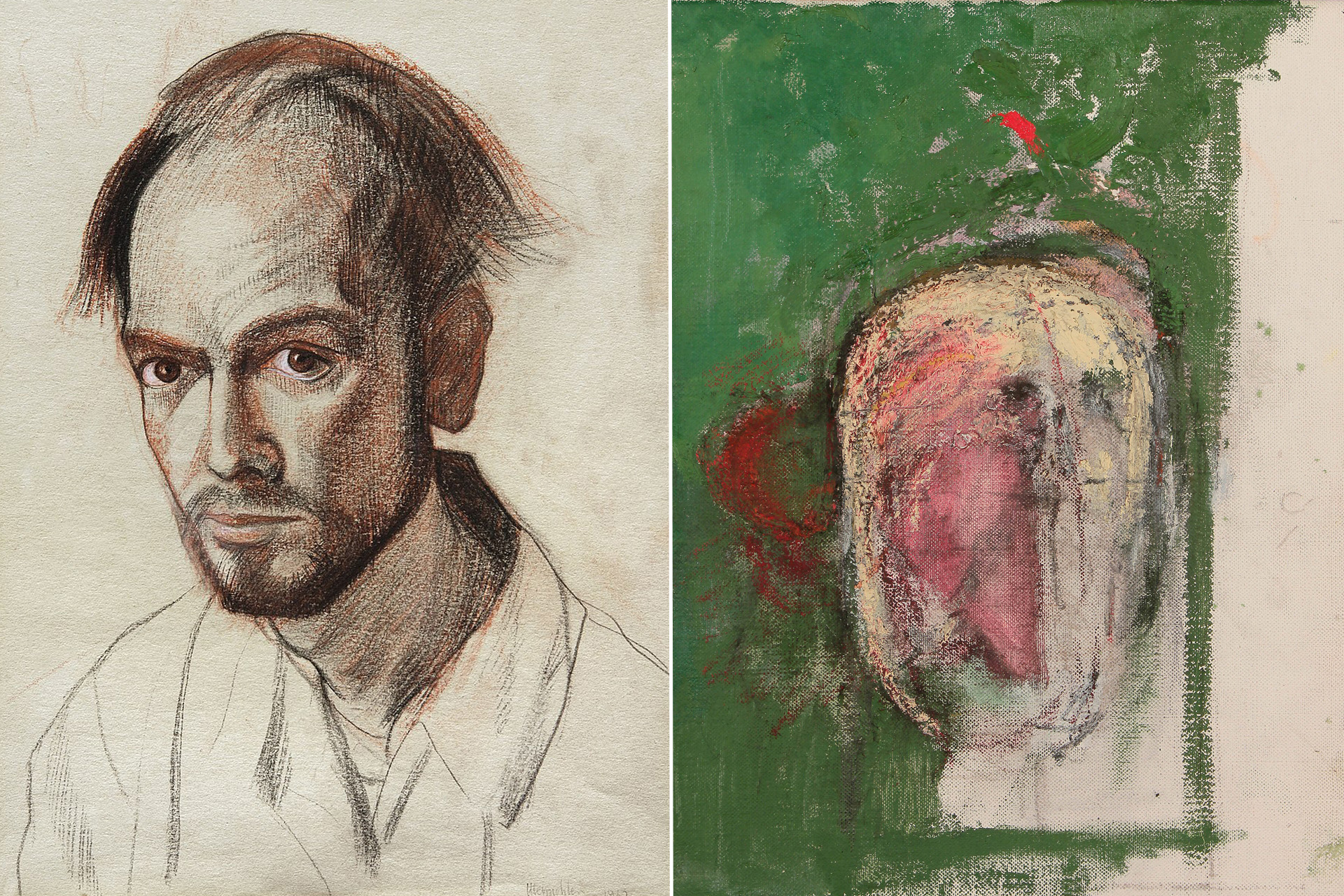In 1995, the American painter residing in the United Kingdom, William Utermolin, was diagnosed with Alzheimer's disease at the age of 65. The diagnosis was difficult and shocking, because it meant that he gradually lost his mental abilities and memories, and even his natural cognitive potential, but a nurse suggested that he entertain himself by drawing self-portraits.
Years later, these paintings turned into material for scientific research and an attempt to reveal the way an Alzheimer's patient sees himself.
Utermolin studied at the Pennsylvania Academy of the Fine Arts, as well as the Ruskin School of Art in Oxford.
His plastic paintings are generally divided into 6 periods spanning about 30 years (1962-1991), each with specific themes.
However, there are works that are considered exceptional in the career of this famous plastic artist, a group of self-portraits that Otermolin began painting since 1996, and they achieved a profound vision in the field of mental health in an unprecedented way.
Shocking diagnosis and clever proposal
Upon being diagnosed with Alzheimer's, Ron Isaacs, a nurse at a neurological hospital, encouraged the artist to create self-portraits to help him come to terms with the ramifications of his condition.
When these paintings were shown to Isaac and other members of his medical team, they found them to be clinically remarkable, and they eventually became the subject of The Lancet scientific papers.
Before Otermolin's death in 2007, he had drawn a series of self-portraits in which he documented the stages of his injury and deterioration of his condition, and it took 5 years to work on them.
And by documenting the gradual deterioration of his mind and mental abilities, Utermolin was able to form a group of paintings that shocked the artistic world so incredibly that they were shown to students of medical departments in European universities as part of educational materials to learn how an Alzheimer's patient thinks and feels, and how he understands himself and the world around him.
The pen of the American painter Utermolin documents the deterioration of his abilities (History of Yasterday website)
As the disease progresses year after year, it can be seen how distorted his paintings are more and more.
The changes observed in the self-portraits, both in the facial structure and the overall style of the study, are seen as evolving towards a no-nonsense jumble of shapes and lines that resembles a piece of abstract modern art, rather than a realistic portrait of a person with clear facial features and personality.
Gradually, the impact of the disease becomes greater, which is evident in the increasing distortion of the images until the last days of Otermolen's life.
Effect of Alzheimer's disease on the abilities of Otremolin
Alzheimer's symptoms not only include memory loss or dementia and personality changes, but also affect the part of the brain responsible for the capabilities of public perception of oneself and the world, which is extremely important for a painter.
As Alzheimer's disease progresses in the patient, the world - and then the artistic vision of the sick painter with the condition - becomes more abstract, confused, and ambiguous, in a way that seemed clear for the first time through self-portraits, due to the loss of abilities.
In an interview with STIRworld magazine, Utermolin's widow, Patricia, sheds light on why these drawings are particularly powerful, saying, "In these paintings we see so strongly William's efforts to explain his changing self, his fears, his sadness and his tension," noting that it was difficult to say whether The changes in his self-portraits occurred due to the loss of his artistic skills or changes in his psyche and mental abilities.
Either way, the series of self-portraits manages to document the emotional turmoil of an artist who is slowly and ruthlessly losing his mind.
Patricia told the magazine that her husband used the art to try to "explain the terrible anxiety he felt about losing himself, in the only way he could."
The art - created by Utermöln only 5 years ago - highlights the condition known as agnosia, a symptom of Alzheimer's that leads to a decline in both the ability to recognize oneself or objects.

